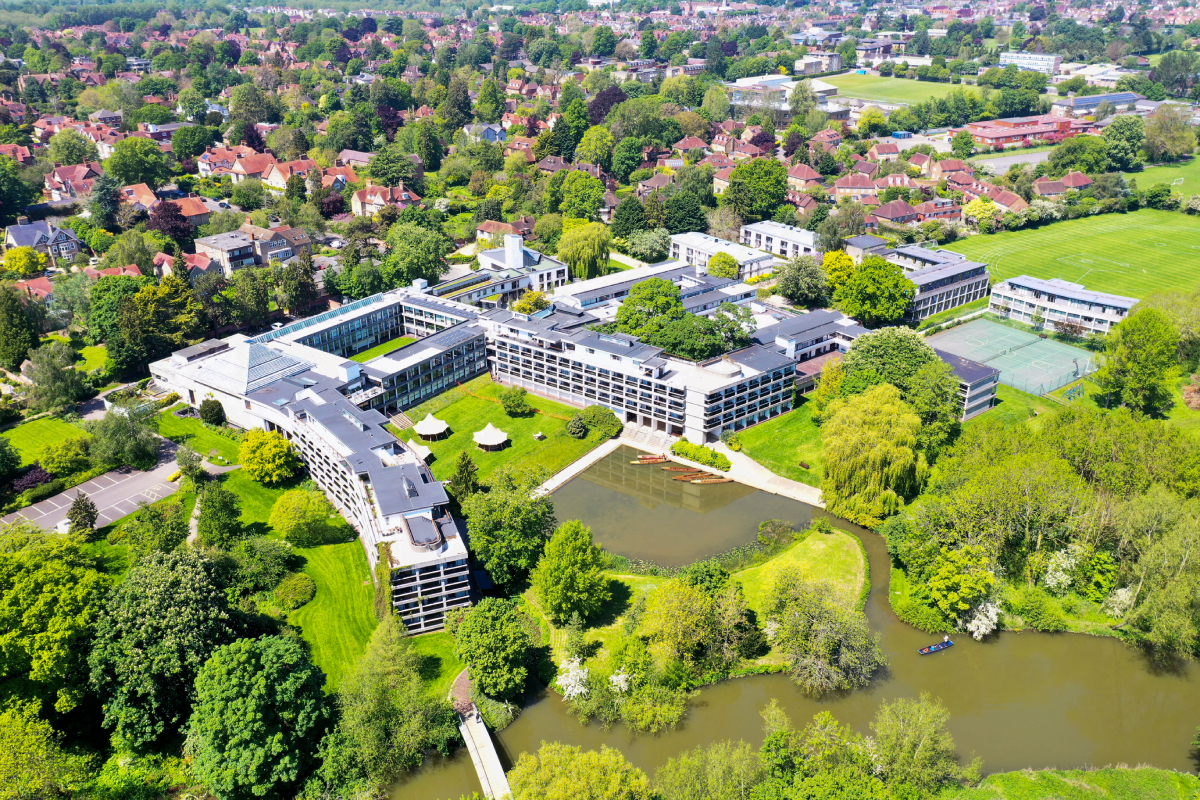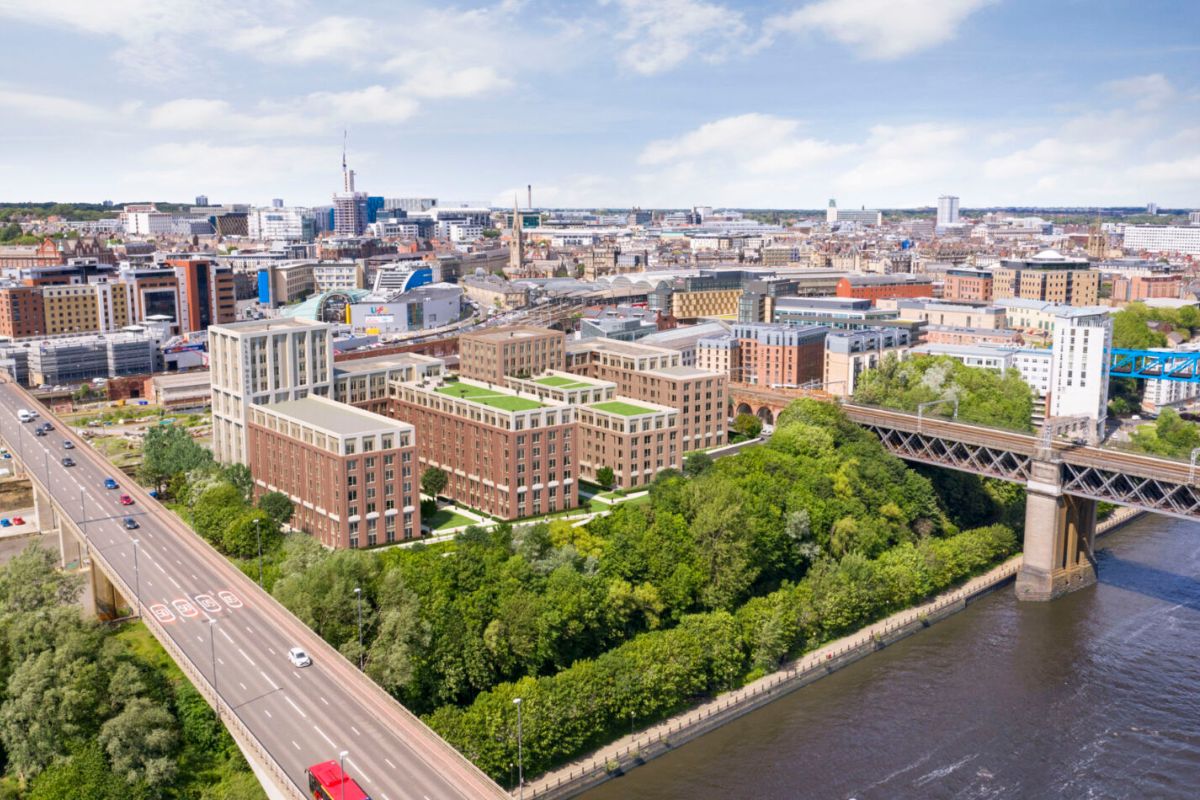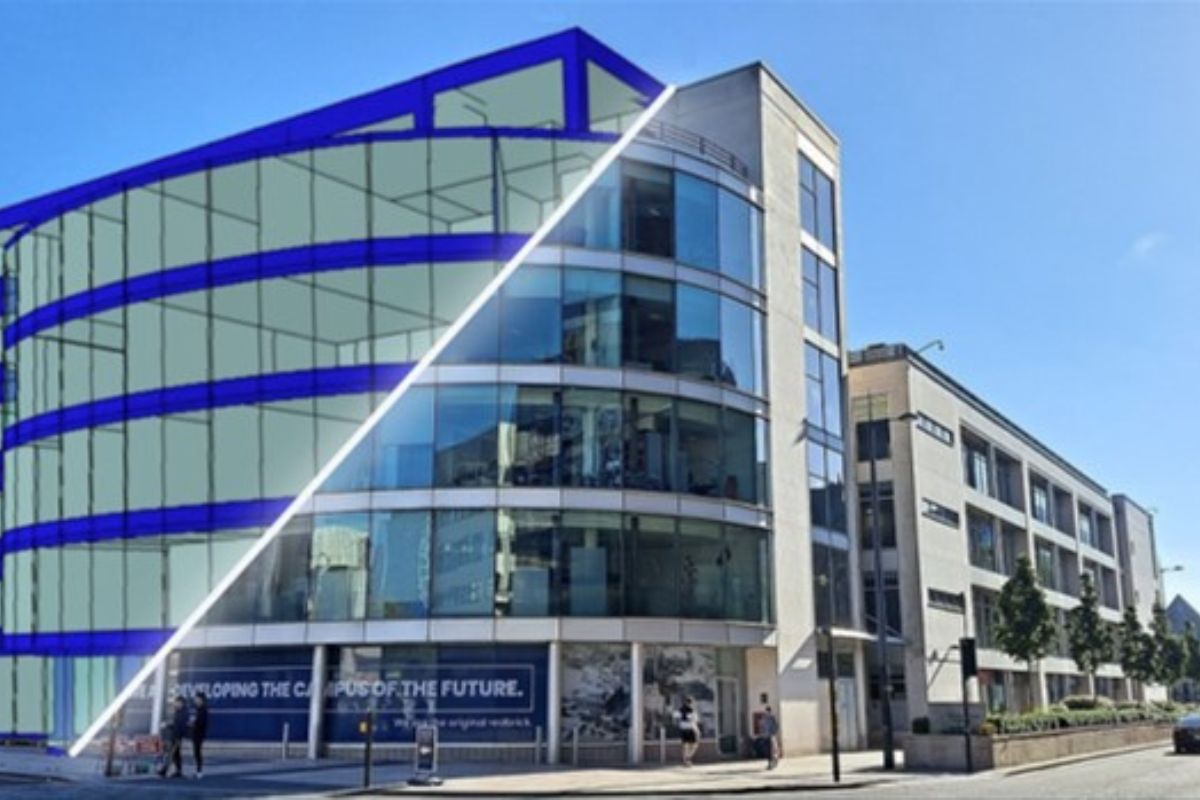Wolfson College & Max Fordham LLP working to cut 75% of carbon emissions on the main college estate
Wolfson College, Oxford University, is working with building services engineers Max Fordham LLP on a project to cut 75% of carbon emissions on its main estate by March 2022. The project is supported by a £5m government grant and is a part of the college’s plans to achieve a net zero estate by 2030 at the latest.
The College was founded in 1966 to combine modern values with academic excellence, providing graduate students and Fellows with an egalitarian home by the Cherwell River. Its cherished Brutalist buildings by Powell and Moya were completed in 1974 and are now Grade II listed. But its design, before the 1970s oil price shocks, does not reflect the College’s commitment to a minimum impact on the environment. The College currently has a twenty-year carbon footprint of 24,000 tonnes of CO2.
In its 2020 Estate Strategy, the College made decarbonisation its top priority, and commissioned an energy audit and decarbonisation plan. Decarbonising the Wolfson estate is a complex and costly challenge given its unique architecture, original 50-year old gas heating system and massive elevations of single glazing.
The cost of this work, changing from gas to electric heat pumps and triple glazing, is expensive and is currently estimated to cost around £10m. Wolfson is gearing up its decarbonisation plans thanks to the grant from the government specifically allocated to help decarbonise the public sector, including higher education. The College’s Governing Body has added a further £3m at least to the grant, to create an £8m project that will see the main site of the College changed from gas to electric heat pumps, and for the replacement of the majority (around 75%) of the windows with ultra-thin, triple glazing and associated insulation by the end of March 2022.
The grant has been provided via the Department of Business, Energy and Industrial Strategy’s Phase 2 Public Sector Decarbonisation Scheme, which specifically aims to encourage a reduction in heating system generated carbon. The grant process was overseen by the department’s delivery partner, Salix Finance.
In addition to this, there will still be further work and funds needed to fully decarbonise the College by 2030 at the very latest. Replacing all of the remaining windows (about 25%) that are not included in the current project will hopefully take place shortly after this phase, if funding becomes available.
The College also needs to re-roof all of its original, flat-roofed main buildings, where the roofs have come to the end of their useful life. This re-roofing will be done with maximum insulation to reduce carbon emissions further, and with additional photovoltaic panels installed on the new roofing to generate electricity. The College will also move all of its lighting to LED, and install a new 1MWh electrical storage battery, which will allow it to draw electricity at peak “green” times, storing energy for later use when it might otherwise have to draw from non-green electrical supplies.
Whilst heat pump technology has been around for a few years, this will be one of the largest heat pump programmes ever undertaken in the UK and one of the largest to be retro-fitted to an estate of this complexity.
The heat pump selected avoids the use of environmentally damaging refrigerants and instead uses CO2 (ironically, the greenest of refrigerants) in its sealed system. The College is very excited about being at the vanguard of proving the efficacy of this technology on larger estates.
The replacement of the windows, the majority of which are large, bespoke and form the external “wall” of most rooms, has been a key challenge for Original Field Architects Andrew Dawson and Marion Brereton. They have now successfully designed and sourced ultra-thin, triple glazed windows that will achieve the lowest possible heat loss, with frames that will replicate, as identically as possible, the original windows. The first windows are due to be installed in August.
Wolfson College President Sir Tim Hitchens said,
“Thanks to the support of the Government, commitment of the College and expertise of architectural and engineering consultants, we can turn a 1960s building into a place fit for the 21st century, without disrupting the fluid composition and striking structure of the original design. This project shows that the tide can be turned on climate change. One of Oxford’s biggest emitters can become net zero, and inspire others across higher education and the public sector.”
Bill Watts, senior partner of Max Fordham LLP, the environmental building services engineer who completed the energy audit and decarbonisation plan for the College, established that all the combined insulation methods would lead to an 80% reduction in the buildings’ annual space heating requirement. In addition to this, replacing the gas boilers that currently provide the heating and hot water with modern heat pumps running on clean electricity would reduce the main estate’s carbon footprint by at least 75%.
To complete all of these works, the College needs to raise a further £6M to achieve net zero on its whole Estate, which covers an area of over 15000m2 of gross internal floor area of work and living space.



